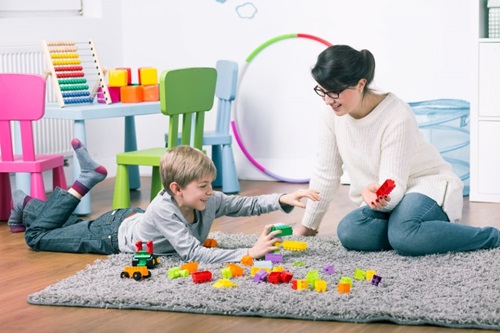Introduction:
The role of the senses in the integration of sensory experience is perhaps the most important aspect in the development of the human’s perception of their world. The problem with sensory processing for the individual is that when they go through multiple daily activities, they might face some special obstacles. This blog takes you into sensory integration, where we uncover its role, how it works, and the challenges it may be accompanied by. Common strategies of sensory integration are also presented here.
The Importance of Sensory Integration:
Sensory integration is an activity aiming at the brain’s translating of information received by the sense organs in a way that is true to the world around us, including touch, taste, smell, sight, sound, and movement. This procedure lays the groundwork for learning, verbal communication, and interpersonal interaction that will later influence aspects like child development, conduct, and emotional well-being.
Challenges in Sensory Processing:
On the other hand, for other people, integrating sensorial signal go on smoothly but for some others, sensory signal processing and response may come as challenging. These difficulties show themselves in many ways such as being highly sensitive to environmental stimuli or under-responsive, difficulty sorting the current from the irrelevant information, and sensory-seeking behaviors.
Common conditions associated with sensory processing difficulties include:
- Autism Spectrum Disorder (ASD)
- Attention Deficit Hyperactivity Disorder is commonly known as ADHD.
- Sensory Processing Disorder (SPD)
- Anxiety Disorders
- Learning Disabilities
Supporting Individuals with Sensory Needs:
Multidisciplinary support for people with sensory processing deficiencies involves an approach that focuses on the individual as a whole, taking into consideration their strengths, challenges, and peculiarities. Here are some strategies for supporting individuals with sensory needs:
Sensory-Friendly Environments:
Provide surroundings that are appropriate for sensory processing with no distractions, comfortable seating, and sensory-compatible lighting and sound levels.
Sensory Diet:
Determine individualized sensory diets specific to the sensory requirements of each person. Incorporate sensory activities and toys like fidget toys, weighted blankets, and sensory swings to promote self-regulation and comfort.
Sensory Integration Therapy:
Get help from occupational therapists, who are professionals in sensory integration therapy. They offer personalized means to enhance sensory processing, motor planning, and adaptive abilities.
Visual Supports:
Visual supports like visual schedules, social stories, and picture cards can be used to improve communication, reduce anxiety, and foster change in sensory-enriched settings.
Educating Caregivers and Educators:
Teach caregivers, teachers, and stakeholders about sensory processing challenges and useful methods for meeting the needs of individuals with sensory difficulties. Emphasize collaboration and communication to keep consistency in different settings.
Conclusion:
Sensory integration is an intricate and dynamic process that serves as a foundation upon which we build experiences and social relations with our surrounding environment. Sensory processing is understood as fundamental and by employing methods to help those who experience sensory needs, we will achieve a more inclusive environment allowing all people to prosper. As a team, let us develop awareness, accommodation, and growth for the people who experience sensory processing conditions.

